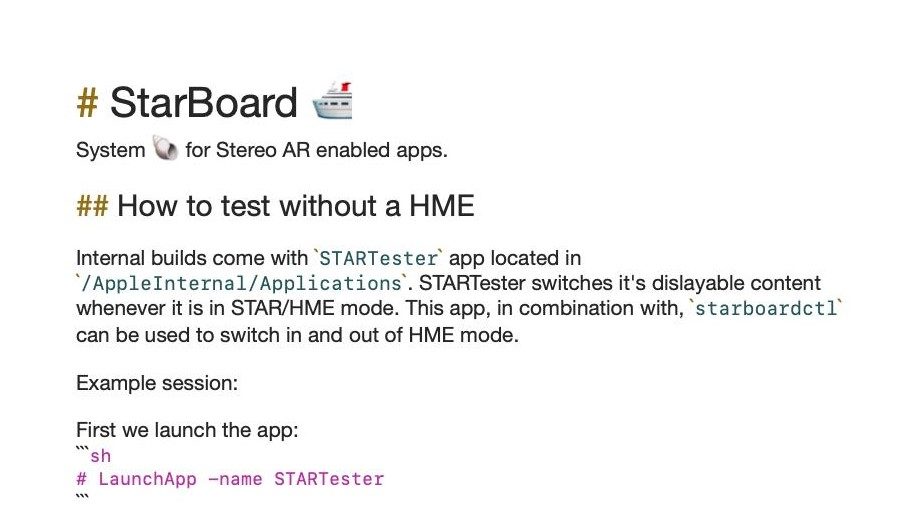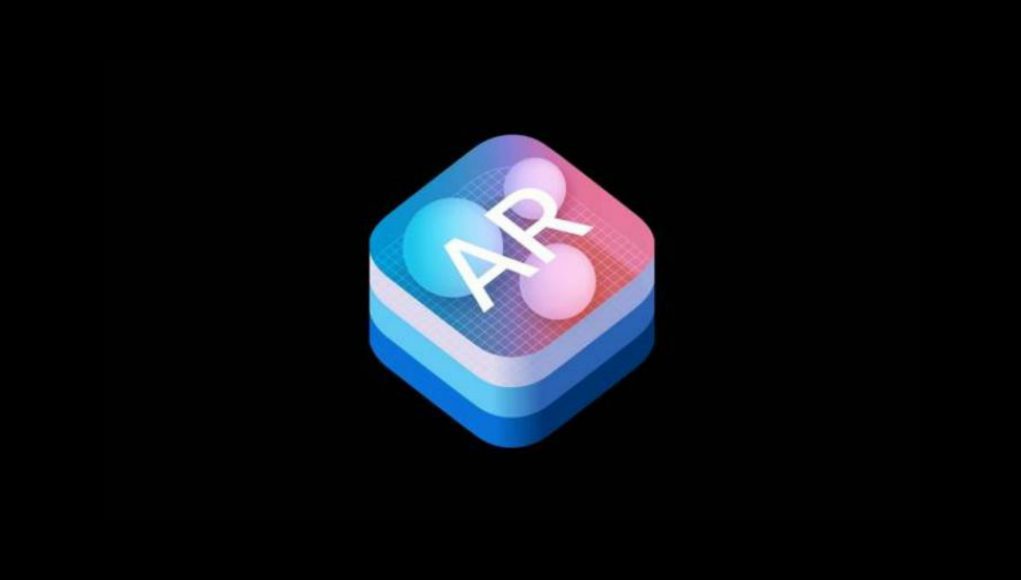Apple may not have shown off any AR tech at the company’s grand iPhone 11 unveiling yesterday, however thanks to some newly discovered code in a recent built of iOS 13, it appears Apple is testing its own AR headset internally.
A readme file found in a new release of iOS 13 briefly outlines how employees can run a stereoscopic AR app on the iPhone without the need of an AR headset, as reported by Engadget.
The file, which was uncovered by iOS developer Steve Troughton-Smith, mentions the code-name ‘StarBoard’, which is defined as a “system for stereo AR enabled apps.”

The readme also uses the code-name ‘Garta’, referring to the AR device itself, which the file dubs an ‘HME’.
Troughton-Smith maintains that stereo AR apps appear to be an app extension type that developers can include in their iOS app bundles. He stipulates that it could function similar to how CarPlay works, which gives you a dashboard view of both first and select third-party apps.
Digging yet deeper, Troughton-Smith also says iOS 13 has something called the ‘GameController’ framework, which includes a gamepad profile for “a device meant to be used while using stereo AR apps,” specifying that the controller includes a trackpad, a trigger button, and a system button.
Both iOS 13.0 gold master and iOS 13.1 beta releases contain Apple’s StarBoard, 9to5Mac’s Guilherme Rambo confirms.
This follows an unsubstantiated report from DigiTimes Taiwan in July that claims Apple had shelved its work on an AR headset, something that supposedly led to the reorganization of the team and suspension of the project.
A few months earlier however, a report from respected industry analyst Ming-Chi Kuo suggested that Apple would likely begin production on its AR headset sometime between Q4 of 2019 and Q2 of 2020, and that it would rely on the iPhone for computing, rendering, internet connectivity and location services.

Putting DigitTime’s report further in doubt, Apple has since gone on a hiring spree for AR/VR professionals across a number of disciplines, including AR software specialists, hardware designers, and a product manager capable of “shipping complex new technology, ideally in the AR/VR space.”
Apple has also used the last three of its WWDC events to release successive versions of ARKit, the company’s dev kit that lets developers build iPhone and iPad-based AR apps.
What’s more, it’s not difficult to imagine these apps being ported to run on a prospective AR headset, which if made simple enough for developers, would essentially give the company a ready-made set of compatible stereo AR apps for its future AR headset. Whatever the case may be, with ARKit Apple has at very least mobilized a number of its software partners to take a low-risk dip into AR app development.







